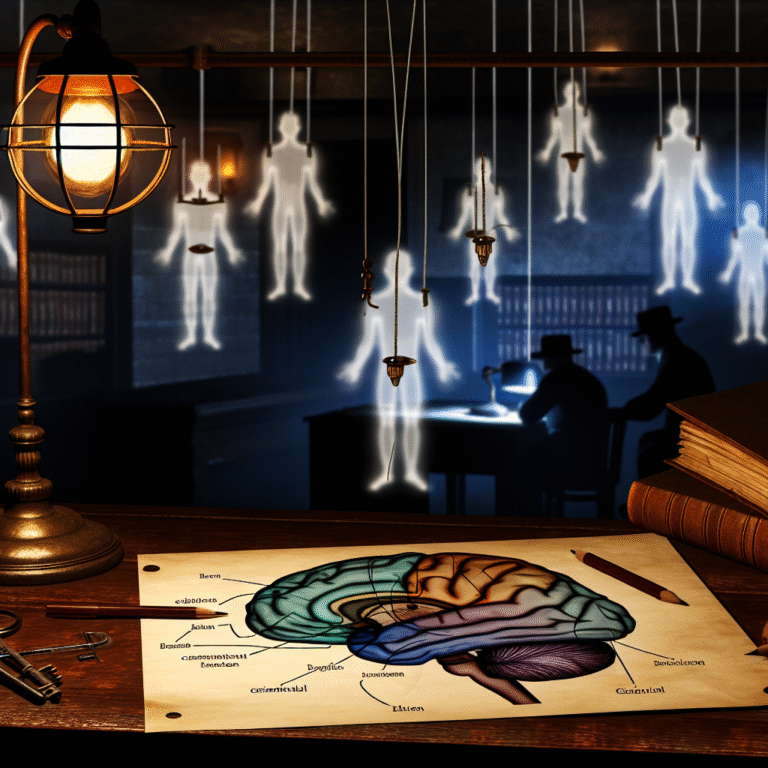
Introduction
Imagine walking past someone who could be charming, alluring, and magnetic on the surface, yet underneath lies a chilling reality. This juxtaposition is the essence of what it means to explore the concept of "Behind the Mask: The Hidden Lives of Psychopaths." Psychopathy remains one of the most misunderstood and misrepresented psychological conditions. Understanding psychopaths is not just a matter of academic curiosity; it can be essential for our safety and the wellbeing of society as a whole.
In this article, we delve into the intricacies of psychopathy, revealing the hidden lives of these enigmatic individuals. Our journey will cover real-world case studies, shocking statistics, and expert insights to uncover the truth behind the mask.
What is Psychopathy?
Defining the Condition
Psychopathy is characterized by a unique combination of emotional detachment, shallow emotions, manipulation, and an inability to form genuine relationships. A common misconception is that all psychopaths are violent criminals, but in reality, many lead apparently normal lives. To understand fully, let’s break down the core traits:
| Trait | Description |
|---|---|
| Emotional Detachment | Lack of empathy and inability to connect emotionally. |
| Superficial Charm | Can be exceedingly likable and charismatic. |
| Manipulation | Skilled at deceiving others for personal gain. |
| Impulsivity | Often act without considering the repercussions of their actions. |
| Lack of Remorse | Show little to no guilt for their actions. |
The Neuroscience Behind Psychopathy
Recent studies using brain imaging techniques, such as MRI scans, show that psychopaths exhibit abnormal activity in the amygdala and prefrontal cortex—areas crucial for emotion regulation and decision-making. This biological basis provides insights into why these individuals exhibit such distinctive behaviors.
Case Study: Ted Bundy – The Master Manipulator
Ted Bundy is often seen as the archetypal psychopath. Charismatic and charming, he lured many unsuspecting victims, hideous behind his mask of allure. Bundy’s intelligent persona made it difficult for people to perceive him as a threat.
Analysis of Bundy’s Behavior
Bundy’s ability to charm and manipulate people made him a notorious figure. His crimes exhibit traits associated with psychopathy, showcasing his lack of empathy and impulsive nature.
Key Takeaway
Behind the mask, psychopaths like Bundy illustrate that charm can be deceptively dangerous, emphasizing the importance of recognizing the signs of manipulation in social interactions.
The Everyday Psychopath: High-Functioning Individuals
Not all psychopaths commit violent crimes; many lead successful lives, often thriving in competitive fields such as business or politics. The so-called "high-functioning psychopath" can be charismatic leaders, making them particularly difficult to identify.
The Corporate Psychopath
In the business world, psychopathy may manifest in individuals who are exceptionally skilled at navigating social dynamics but lack genuine concern for others. According to a study published in the Journal of Business Ethics, individuals with psychopathic traits can be overrepresented in corporate environments.
| High-Functioning Traits | Manifestations |
|---|---|
| Charm and Charisma | Ability to generate a positive impression. |
| Strategic Thinking | Excelling in manipulative scenarios to achieve goals. |
| Risk-Taking | Willingness to exploit situations for personal gain. |
Case Study: The Corporate Executive
This case study involves a CEO who demonstrated shocking manipulation strategies to oust competitors while maintaining a likable public image. Co-workers praised his competence, unaware of the extent of his manipulative tendencies until after his unethical practices came to light.
Recognizing Psychopathic Behavior
Red Flags to Look For
Understanding the telltale signs of psychopathy can help us navigate our relationships more effectively. Key indicators include:
Charming yet Deceptive: Often an excellent conversationalist who can tell engaging stories, yet their excitement frequently seems insincere.
Inconsistent Emotions: Their emotional responses do not match the context of the situations they encounter.
- Lack of Accountability: They often shift blame to others to deflect responsibility.
Case Study: A Friendship Gone Wrong
Consider a friendship where an individual realized their close friend frequently borrowed money but never repaid it. Over time, manipulative behavior became evident as this “friend” fabricated stories to garner sympathy.
Importance of Awareness
By recognizing these patterns, victims can protect themselves from potential harm. It’s essential to establish boundaries and hold others accountable for their actions.
Psychopathy in Popular Culture
The Fascination with Psychopaths
The theme of psychopathy permeates film, literature, and television. Characters like Hannibal Lecter or Patrick Bateman are often glamorized, creating a false narrative that glamorizes violence.
Dissecting Portrayals
While these portrayals highlight certain traits of psychopathy accurately, they often ignore the complexities of the condition.
| Positive Aspects of Understanding Psychopathy | Negative Effects of Misrepresentation |
|---|---|
| Awareness: Counts towards better safety in society. | Romanticization: Can mislead public perceptions. |
| Education: Helps in identifying behaviors and managing expectations. | Stigmatization: Promotes fear rather than understanding. |
The Role of Treatment and Rehabilitation
Can Psychopaths Change?
Traditionally, psychopathy has been viewed as a lifelong condition; however, recent insights from psychology suggest that treatment options might provide some benefits, especially if started early.
Rehabilitation Techniques
Cognitive Behavioral Therapy (CBT): Educates individuals about their thoughts and how they impact behavior.
- Motivational Interviewing: Focuses on encouraging a desire for change.
Case Study: Rehabilitation Success?
A convict with diagnosed psychopathy underwent a tailored treatment program during incarceration. Following release, he shared how the program helped him understand his actions better and shifted his focus toward community service.
Key Insight
The journey towards improvement is difficult, but illustrating success stories underscores that there may always be hope for those willing to confront their inner demons.
Conclusion
In conclusion, "Behind the Mask: The Hidden Lives of Psychopaths" reveals a complex landscape filled with contradictions and hidden dangers. Understanding the multifaceted nature of psychopathy will empower us to recognize the traits and behaviors that mask severe emotional dysfunction.
By remaining vigilant, informed, and empathetic, we can better navigate our relationships and communities while fostering a deeper understanding of psychological complexities. Whether in our work environments, personal lives, or popular culture, the exploration of psychopathic traits can aid in enhancing our defensive awareness.
FAQs
1. Are all psychopaths violent criminals?
No, not all psychopaths commit violent crimes. Many are high-functioning individuals who may excel in various fields, displaying manipulative traits without resorting to violence.
2. How can I identify a psychopath in my life?
Look for patterns of charm mixed with manipulation, emotional detachment, and lack of accountability. Trust your instincts if something feels off.
3. Is psychopathy treatable?
While traditionally considered untreatable, recent therapies may help some individuals understand their behaviors better, leading to improved social interactions.
4. Can psychopaths feel emotions?
Psychopaths may feel emotions, but they often lack depth and empathy, leading to shallow emotional experiences and disconnected responses.
5. How prevalent is psychopathy in society?
Estimates suggest that about 1% of the population may exhibit psychopathic traits, with higher prevalence rates in specific fields, such as criminal justice and corporate environments.
By exploring the intricacies behind psychopathy, we’ve peeled back the layers of the mask. It is essential for us to engage thoughtfully and intentionally with the subtle signs and complex behaviors that dance behind the facade many present. Awareness is our first defense in a world where charm may conceal darkness.















